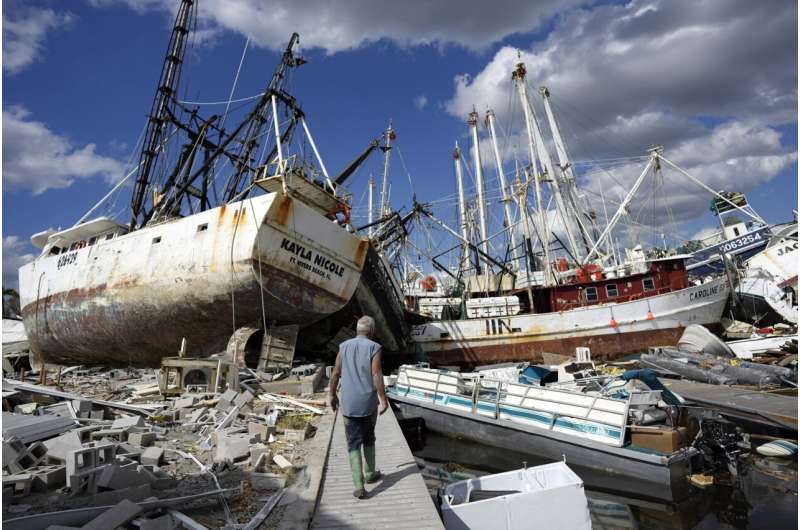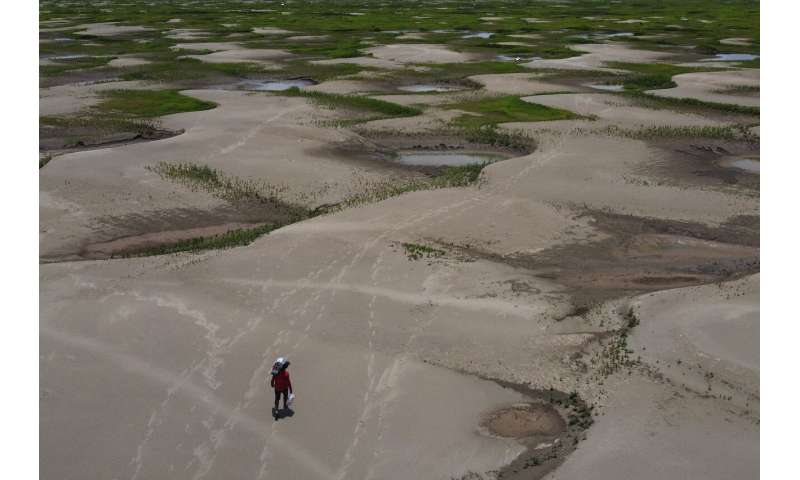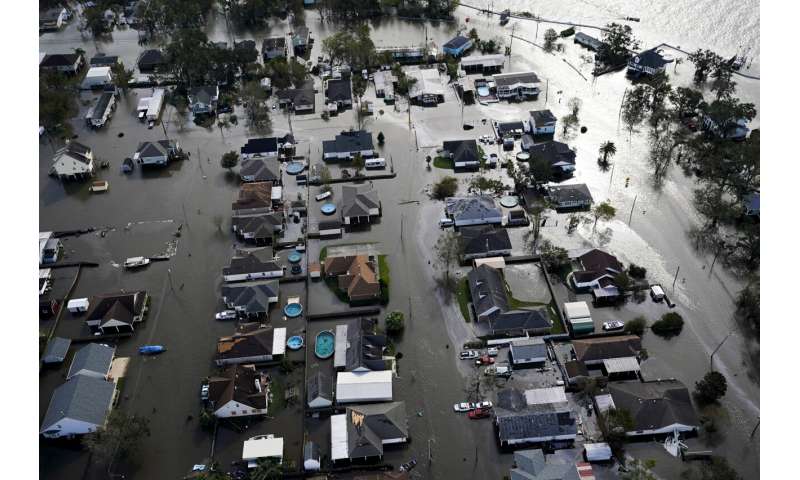This article has been reviewed according to Science X's editorial process and policies. Editors have highlighted the following attributes while ensuring the content's credibility:
fact-checked
reputable news agency
proofread
Bye bye, El Nino. Cooler hurricane-helping La Nina to replace the phenomenon that adds heat to Earth

The strong El Niño weather condition that added a bit of extra heat to already record warm global temperatures is gone. It's cool flip side, La Niña, is likely to breeze in just in time for peak Atlantic hurricane season, federal meteorologists said.
The National Oceanic Atmospheric Administration Thursday pronounced dead the El Niño that warms parts of the central Pacific. The El Niño, while not quite a record breaker in strength, formed a year ago has been blamed, along with human-caused climate change and overall ocean warmth, for a wild 12 months of heat waves and extreme weather.
The world is now in a neutral condition when it comes to the important natural El Niño Southern Oscillation, which warps weather systems worldwide. Neutral is when weather gets closer to long-term averages or normal, something that hasn't happened as much recently as it used to, said NOAA physical scientist Michelle L'Heureux, who is the lead forecaster of the agency's ENSO team. But it likely won't last, she added.
She said there's a 65% chance that a La Niña, a cooling of the same parts of the Pacific that often has opposite effects, will form in the July, August and September time period. One of the biggest effects of La Niña is that it tends to make Atlantic hurricane season more active, and that storm season starts its peak in August.

"The likelihood of a La Niña coupled with record warm sea surface temperatures is the reason the National Hurricane Center is forecasting an extraordinary hurricane season," said Kathie Dello, North Carolina's state climatologist. "States from Texas to Maine are making preparations for an active year."
Both El Niño and La Niña create "potential hot spots" for extreme weather but in different places and of different types, L'Heureux said.
"La Niña tends to, in the winter, bring drier conditions across the southern tier of the United States and if you put global warming on top of that, that could also mean those drier conditions could intensify into droughts," L'Heureux said.
That's because storm systems, mostly in the winter, move slightly northward with a shift in the jet stream during La Niña years, bringing more rain and snow north, L'Heureux said.

Even though a La Niña tends to be cooler, there will likely be a residual effect of the exiting El Niño on global temperatures, L'Heureux said. This year has seen each month breaking global records so far.
No more than 8% of last year's record heat could be attributed to El Niño and other natural variability, a panel of 57 scientists concluded earlier this month. The rest was from human-caused climate change from the burning of coal, oil and natural gas.
A 1999 economic study found that drought from La Niña cost the United States agriculture between $2.2 billion to $6.5 billion, which is far more than the $1.5 billion cost of El Niño. A neutral ENSO is best for agriculture.
Given La Niña's connection to Atlantic hurricanes and drought in the United States it makes sense that they are generally costlier, but every El Niño and La Niña is different, so people and governments should prepare for them, said meteorologist and economist Michael Ferrari, chief scientific officer of AlphaGeo, a firm that works on financial investments and climate.
-

A resident of a riverside community carries food and containers of drinking water after being distributed due to the ongoing drought in Careiro da Varzea, Amazonas state, Brazil, Oct. 24, 2023. The National Oceanic Atmospheric Administration Thursday, June 13, 2024, pronounced dead the El Nino that warms parts of the central Pacific. Credit: AP Photo /Edmar Barros, File -

Homes are flooded in the aftermath of Hurricane Ida, Aug. 30, 2021, in Jean Lafitte, La. The National Oceanic Atmospheric Administration Thursday, June 13, 2024, pronounced dead the El Nino that warms parts of the central Pacific. Forecasters expect La Nina to breeze in just in time for peak Atlantic hurricane season. Credit: AP Photo/David J. Phillip, File
The El Niño that just ended "wasn't a record-breaker in anybody's book, but it was probably about top five," L'Heureux said. And it added to overall global temperature and brought more moisture to the southern United States this year, along with drier conditions in parts of South America and Central America, she said. The Horn of Africa got wetter.
Coral reef experts say the combination of record ocean temperatures and the boost of heating from El Niño have led to a major global bleaching event threatening and at times killing vulnerable coral.
Before this year's El Niño, the world had back-to-back-to-back La Ninas, which is unusual, L'Heureux said. Some studies have shown that the globe should expect more El Ninos and La Ninas—and fewer neutrals—as the world warms, but it's still an unsettled issue, she said.
© 2024 The Associated Press. All rights reserved. This material may not be published, broadcast, rewritten or redistributed without permission.





















